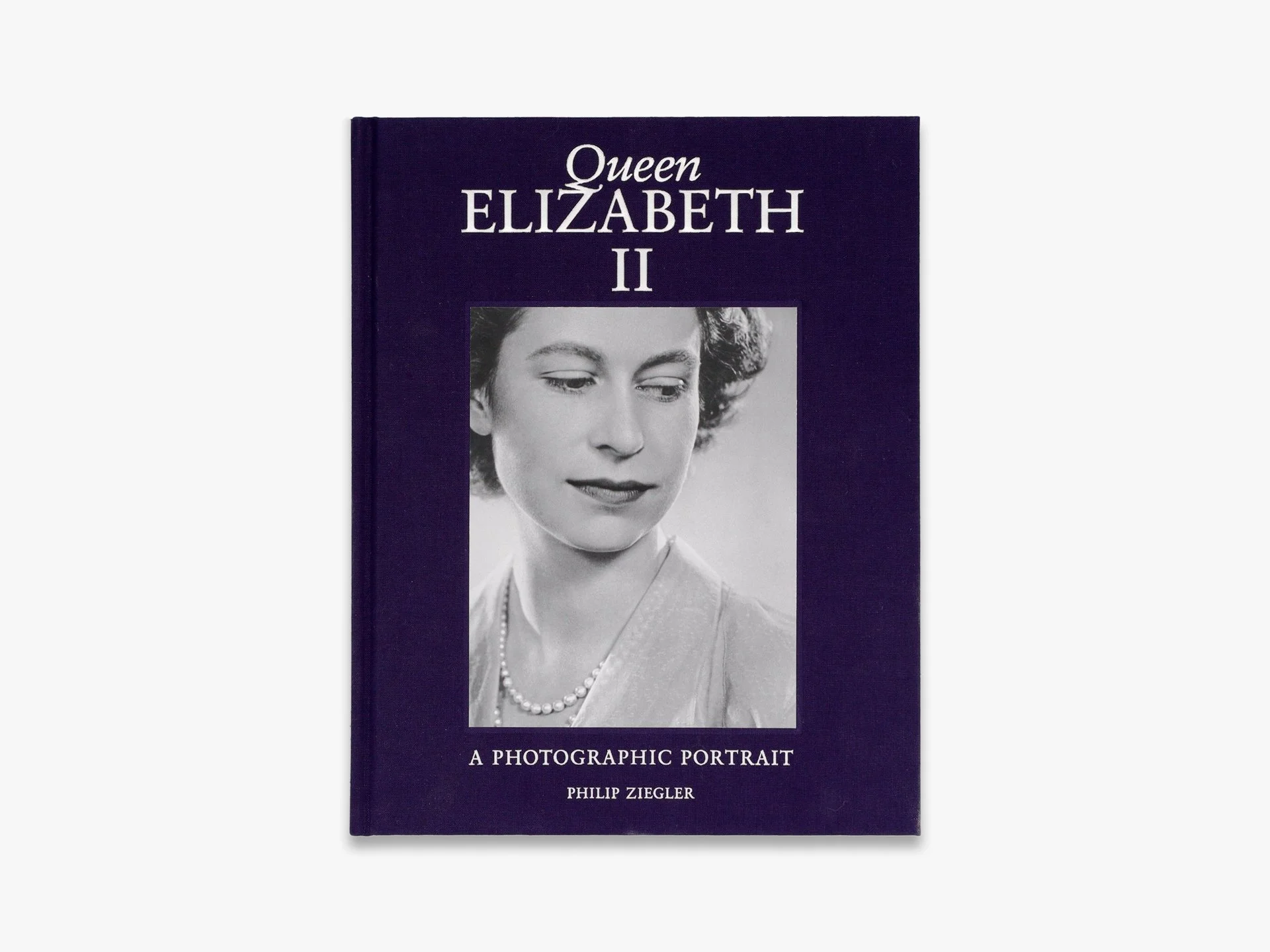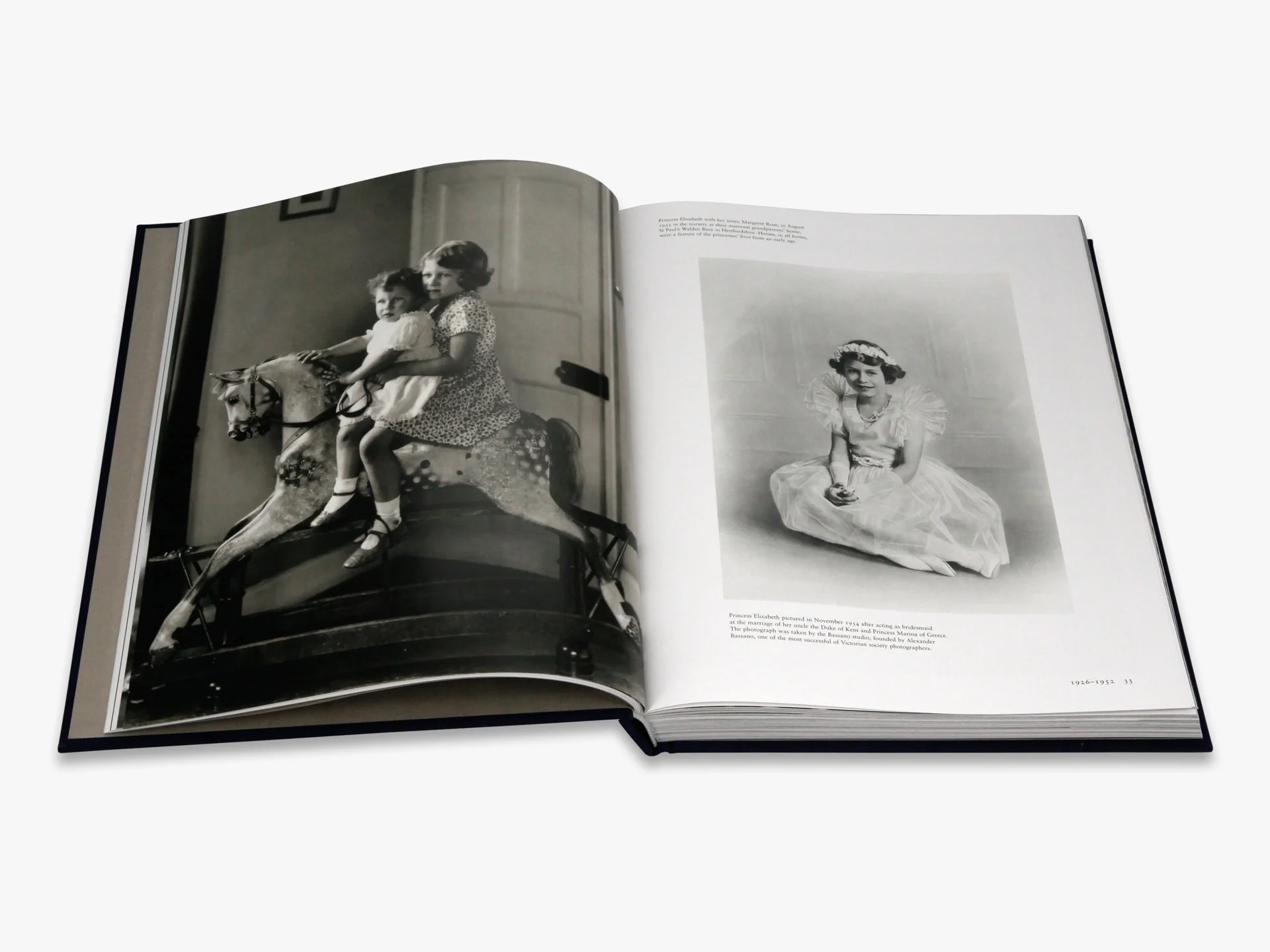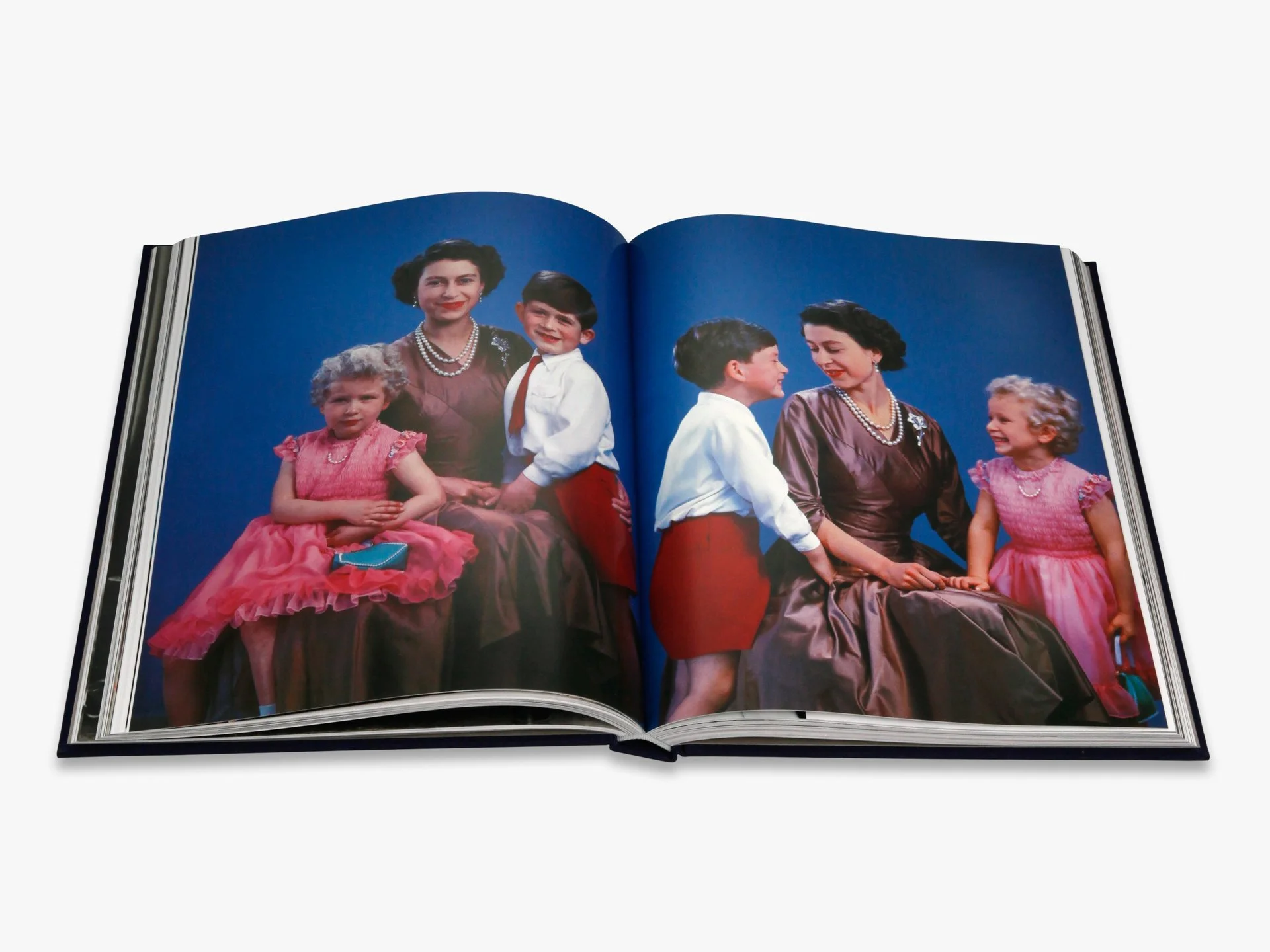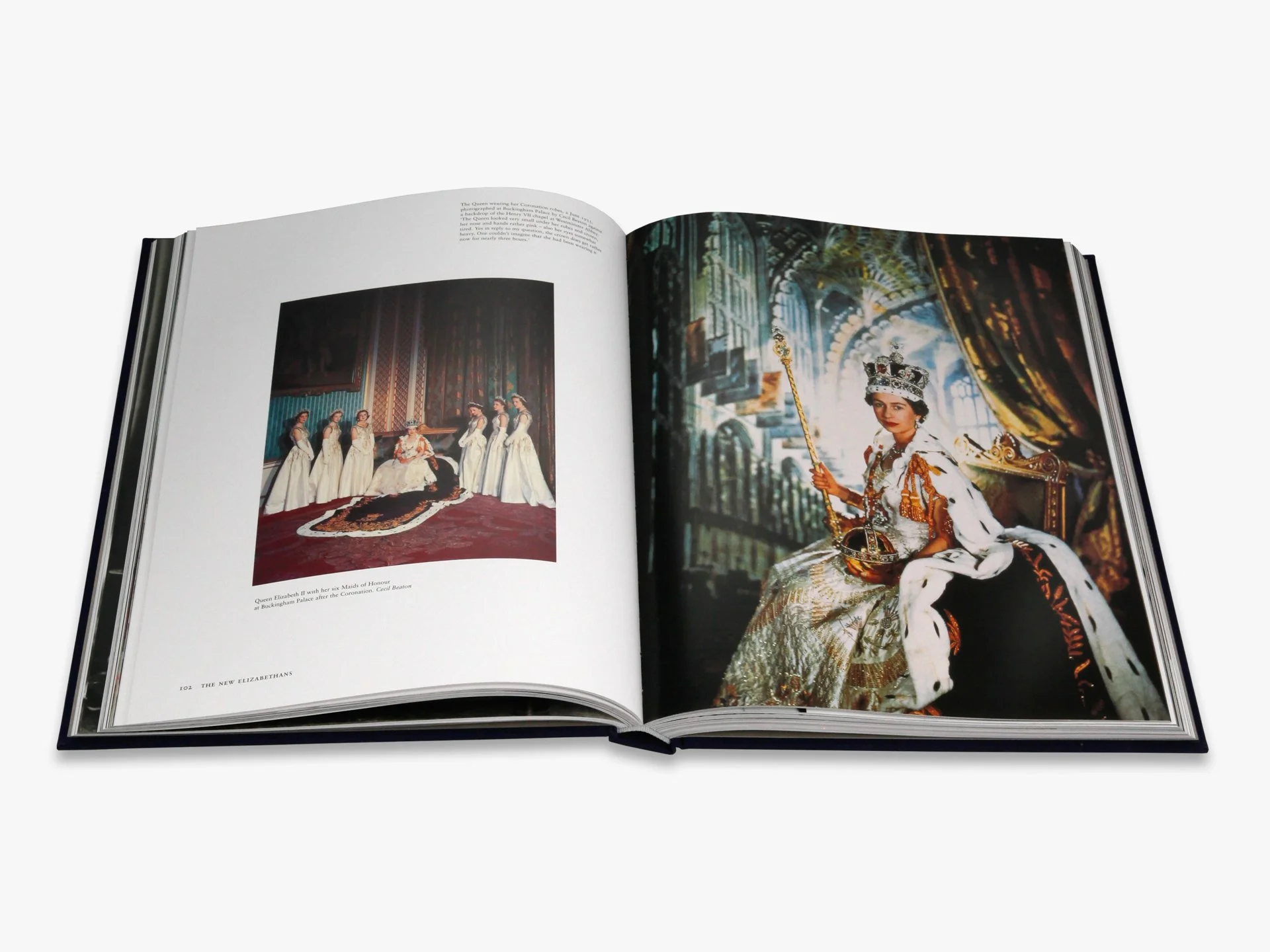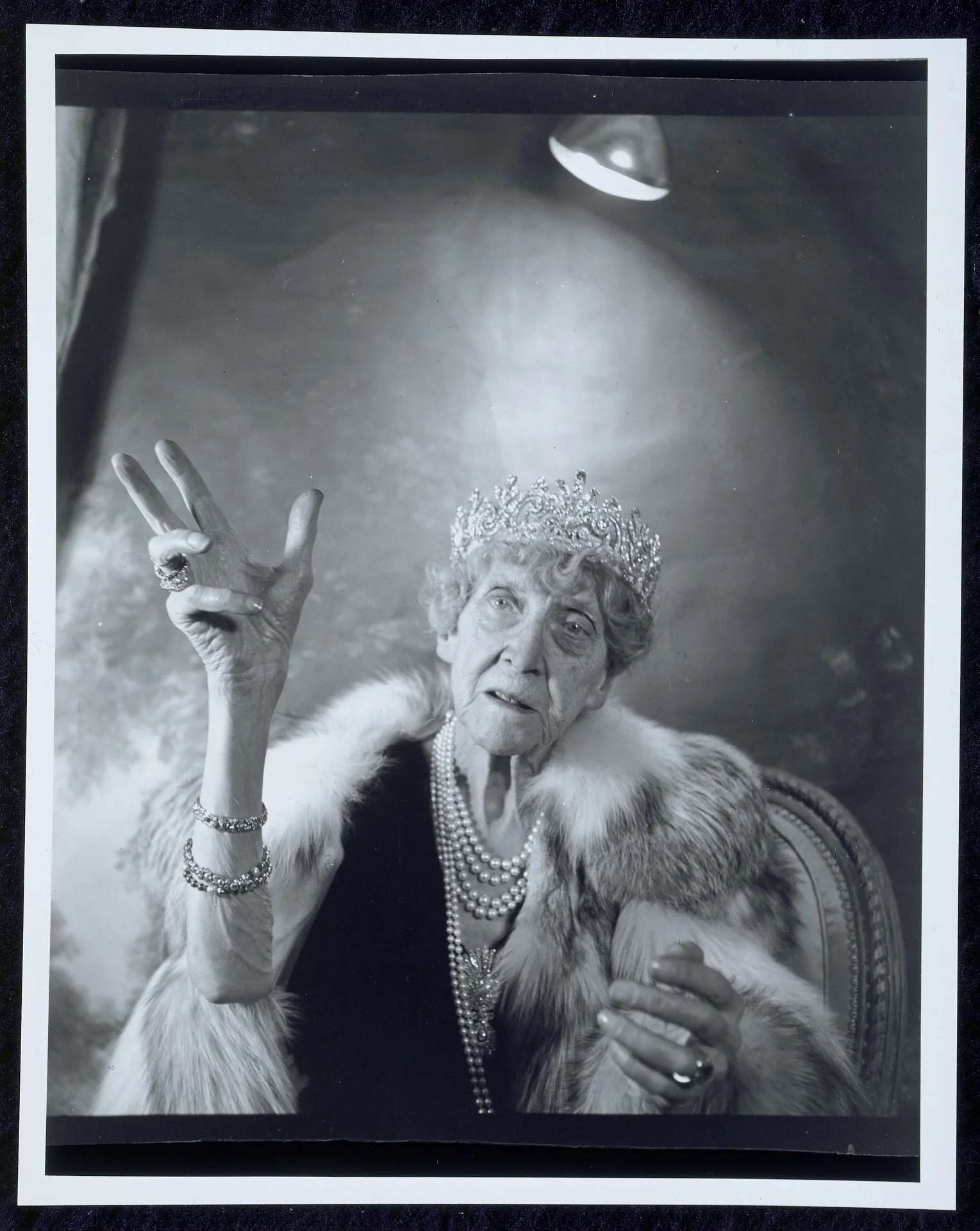Queen Elizabeth II: A Photographic Portrait
Courtesy of Thames and Hudson.
Text By: Nicole Miller
Historian and biographer, Philip Ziegler, assembles a collection of over two hundred fascinating photographs of Queen Elizabeth II’s life and reign to better our understanding of the Queen as a conscientious individual and a symbol of national unity and stability as Britain's longest-serving monarch. Queen Elizabeth II: A Photographic Portrait features Zeigler’s account of significant historical events involving the royal family alongside contextual images that reveal how photographers played a crucial role in carefully constructing the Queen’s image to manage public perception of the Crown. From her first official photograph as a baby in 1926 to the pictures taken during the months before her death in 2022, the Queen is presented in a range of poses and backdrops throughout her consequential 96 years of life, independent from and with her family, at home and overseas, formal and informal, and appealing to both the conservative and the romantic.
The photographs showcased in the book exemplify how portrait photography not only provides a record of a person’s life but also imparts curated meaning, message, and intention to an audience. Queen Elizabeth’s viewers were on a global scale, and as more photographers were invited to document the Queen’s reign, she became more vulnerable to gossip and critique. However, the presentation of her personal life transformed her public image and increased her popularity. The royal family as a soap opera, as Ziegler refers to their publicized persona, ultimately added great economic value to the nation, as the royal family became the attraction that drew most visitors to London.
Courtesy of Thames and Hudson.
During World War II, Elizabeth, who was a princess at the time, posed for many photographs with her mother, father, and sister to emphasize the consistent nature of family life towards the end of the “Phoney War” period. The portrait photographer, Lisa Sheridan, took informal pictures of the royal family outdoors at the Royal Lodge in Windsor to convey a picturesque image of a close-knit family. Elizabeth and her sister, Mary, smile sincerely throughout the shoot. They frolic in a field and pick daffodils after one of their routine horseback rides. They appear to be at ease, comfortably engaging with the camera and one another in their place of residence. In another photograph captured by Sheridan, Elizabeth poses with one of the royal corgis. The presence of animals in Queen Elizabeth’s photographs throughout the years added an “agreeable touch of informality,” as well as a pleasing photogenic element. These photographs were subsequently published in the book, Our Princesses at Home, to offer solace to the troops and present an idealized perspective of what they were fighting for. A portrayal of domestic happiness was deemed a crucial part of the war effort.
Courtesy of Thames and Hudson.
Zeigler states that Cecil Beaton did more than any photographer to humanize, even glamorize, the royal family. He was one of the few photographers who were summoned by the family without prior application to take their photographs. Elizabeth’s royal marriage brought her family more into the limelight, and soon after, she gave birth to her first child, Prince Charles. Beaton captured a tender moment between Elizabeth and her son, observing how she “sat by the cot and, holding his hand, watched his movements with curiosity, pride and amusement.” These emotions are evident through Elizabeth’s warm countenance, as she attentively dotes on her firstborn, reinforcing her relatable identity as a mother.
[Insert coronation photograph black and white, pg. 105]
Courtesy of Thames and Hudson.
Beaton continued photographing Queen Elizabeth during her most notable achievements, including her coronation in 1953. He expertly captured the familial bonds with her husband and children, and was equally effective in producing a portrait of an esteemed, impressive, and prominent political figure. The new Queen, as captured by Beaton, in her magnificent robes and crown, carrying the Orbe and Spector, is a picture of heightened importance. Her clothing is extremely ornate and authoritative, and, despite the coronation amassing much pomp and circumstance, the photograph's angle, showing her profile in black and white, conveys a sense of elegance captured in a reflective moment where she appears unaware of the camera. Queen Elizabeth sits tall with purpose, ready to devote herself to her people and promote a new, prosperous Britain.
Courtesy of Thames and Hudson.
Whether in an intimate setting with her family, or at the center of grand ceremonies and rituals, the photographs of Queen Elizabeth II present her as dutiful and loyal to her subjects. Her unwavering dedication, particularly in her later years, remained unquestioned as she proudly served the United Kingdom.


